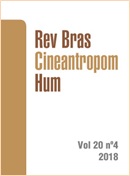Abdominal muscular endurance in Brazilian children and adolescents: systematic review of cross-sectional studies
DOI:
https://doi.org/10.1590/1980-0037.2018v20n4p483Resumen
The literature has demonstrated the importance of musculoskeletal fitness in the prevention of chronic noncommunicable diseases. Although current recommendations of physical activities include strengthening and muscular endurance aspects, little is known about the muscular endurance levels of children and adolescents in a national scope. The aim of this study was to systematically review the literature to identify the prevalence of Brazilian children and adolescents who meet health criteria for muscular endurance. A hierarchical search was conducted in four databases (MEDLINE; Scopus; SciELO; LILACS) using the following terms: “muscular endurance”, “muscle endurance”, “physical fitness”, “child”, “adolescent”, “adults” “school” and correspondents in the Portuguese language. Overall, 2,652 articles (2,269 had their title and abstract read) were found and 70 were eligible for reading in full. Seventeen studies were reviewed and evaluated for risk of bias. Among 32,661 children and adolescents, only 40.2% of boys and 31.9% of girls presented abdominal muscular endurance adequate for health, and most studies were conducted in the southern region of Brazil. The variability in procedures for evaluating abdominal muscular endurance and cut-points used for interpretation occurred due to the use of different standardizations (PROESP/BR®, FITNESSGRAM® and AAHPERD®). Less than half of Brazilian adolescents of both sexes have adequate abdominal muscular endurance for health. Studies investigating the causes and consequences of inadequate abdominal muscular endurance may contribute to strategies for disease prevention and health promotion of children and adolescents.
Descargas
Publicado
Número
Sección
Licencia

Direitos Autorais para artigos publicados nesta revista são do autor, com direitos de primeira publicação para a revista. Em virtude da aparecerem nesta revista de acesso público, os artigos são de uso gratuito, com atribuições próprias, em aplicações educacionais e não-comerciais, desde que seja dada a atribuição. Esta obra foi licenciada com uma Licença Creative Commons Atribuição 4.0 Internacional - CC BY


